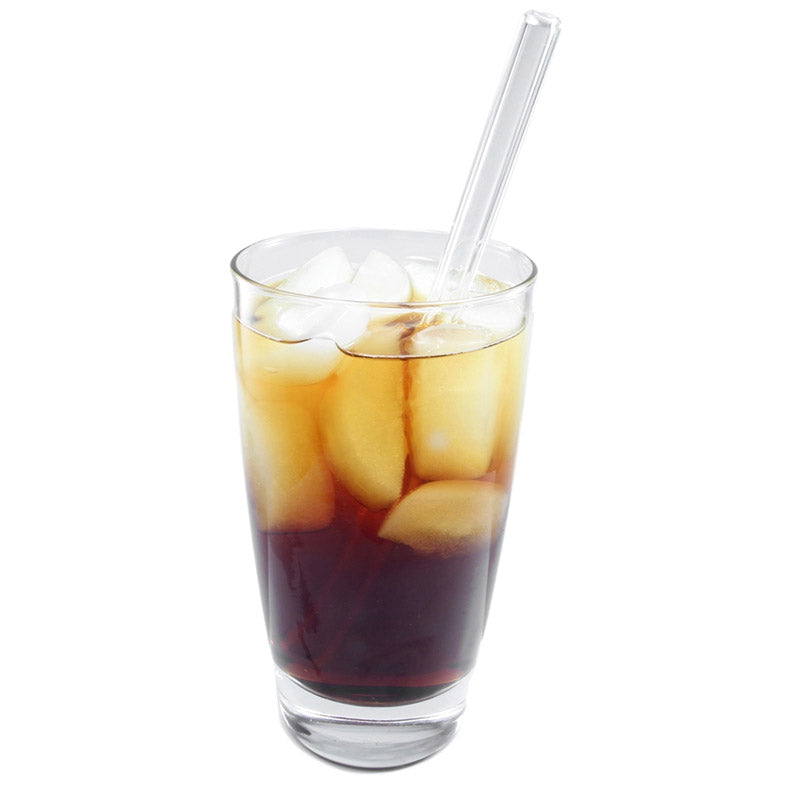One of the ways I have tried to stay connected with the GlassSipper community during the Covid-19 nightmare is through my action-packed live Instagram video sessions, broadcast direct from my glass studio. During each live event, I fire up my torch and demonstrate how I create my GlassSipper reusable drinking straw designs - particularly my menagerie of GlassSipper critters. At the same time I use the opportunity to bring you all up to date on GlassSipper developments and goings on in my life that I think may be of interest.
Another great thing about Instagram (aka “IG”, “Insta” and “the gram”) is the opportunity for real-time dialogue in which participants share messages with me and each other throughout the broadcast. During a live post last November I asked my viewers to suggest new critters for me to add to the GlassSipper family. Shout-out to Elana for recommending that I create a llama reusable glass drinking straw.
Sometimes it takes me weeks of frustration and buckets of failed attempts before I eventually perfect new designs (I’m thinking about butterflies, hummingbirds, and sharks), and sometimes it happens so quickly and naturally that it feels like I’ve been making the new critter all my life. For reasons that are a mystery to me the llama fell into the latter category. Within days of Elana’s suggestion I had designed my new GlassSipper llama, photographed the image, and posted the llama glass drinking straw on my website. Although not my number one seller (yet), llama GlassSippers soon became a favorite among a growing group of dedicated llama lovers. Perhaps it has something to do with the llama’s gentle reputation. Or its soft and cuddly coat. Or maybe it’s the dreamy eyes.
It’s particularly fitting that we introduced the GlassSipper llama reusable glass drinking straw during these Covid times. It turns out that the loveable llama is playing a key role in the development of a treatment for coronavirus. Recently, a team of Israeli and American scientists have developed a “nanobody” cocktail that could neutralize the coronavirus - including the Delta variation.
Llamas and other members of the camel family produce tiny disease-fighting antibodies called nanobodies that are more effective in attacking and subduing the Covid-19 virus than the larger antibodies produced by humans. An antibody is a protein produced by the immune system which identifies and neutralizes microscopic foreign invaders such as bacteria and viruses. Antibodies are the immune system's natural defence against disease. When extracted from blood, antibodies can be used to develop treatments and vaccines.

Llama immune systems produce two different types of antibodies when a llama is sick. The first is larger and similar to the antibodies produced by humans. The second type of llama antibodies are the much smaller nanobodies, which humans do not produce. The small size of llama nanobodies allows them to fit into pockets on the surface of viral proteins (such as Covid-19) that larger human antibodies cannot squeeze into. By attaching to the surface of the Covid-19 virus, the nanobodies create a barrier around the virus that prevents the virus from binding to healthy cells. In so doing the llama nanobodies prevent the onset or spread of the disease.
According to Dr. Dina Schneidman-Duhovy of the Hebrew University in Jerusalem, Israel,“The antibodies stick to the virus and just don’t come off, almost acting like glue. The antibodies are also very specific, targeting the novel coronavirus very precisely.”
Llama nanobodies are more stable than human antibodies (nanobodies can survive for six weeks at room temperature), are easier to modify, and less expensive to convert into medications than those developed from human antibodies.
As part of their research, the scientists vaccinated a llama with the coronavirus.Two months later, the llama produced nanobodies against Covid-19 that neutralized the virus. The scientist then extracted the nanobodiesand replicated them. The scientists hope that after future research and refinement they will be able to replicate the nanobodies on a massive scale for use on coronavirus patients.
These nanobodies, being smaller than human antibodies, can be turned into an aerosol spray that patients inhale directly into their lungs from a simple inhaler. This makes nanobody-based treatment less expensive and much easier to administer than a vaccine that is injected into the bloodstream.
A nanobody-based aerosol treatment goes to work almost immediately, by contrast with vaccines which can take up to a month or two before they provide meaningful protection. The antibody treatment can also be used to treat somebody who is already sick by lessening the severity of the disease.
According to Dr. Dina Schneidman-Duhovy, ”If we can produce an innovative drug through the (llama nanobody) cocktail, it will be a life-saving treatment - if given early in the disease.” Dr. Schneidman-Duhovy also expects that the new drug will be able to be used preventatively for individuals exposed to a person with coronavirus.
Thankfully, effective vaccines have been widely available for months. Nanobody research is continuing with the hopes of developing effective nanobody treatments for those who have already contracted the virus. Only time - and further research - will tell whether nanobodies will form the basis for effective treatments against Covid-19. And if they do, it’ll be thanks in large part to our friend the llama.
Until then, I will raise my glass - together with my GlassSipper llama reusable glass drinking straw - in thanks that my entire family and I have been fully vaccinated.








